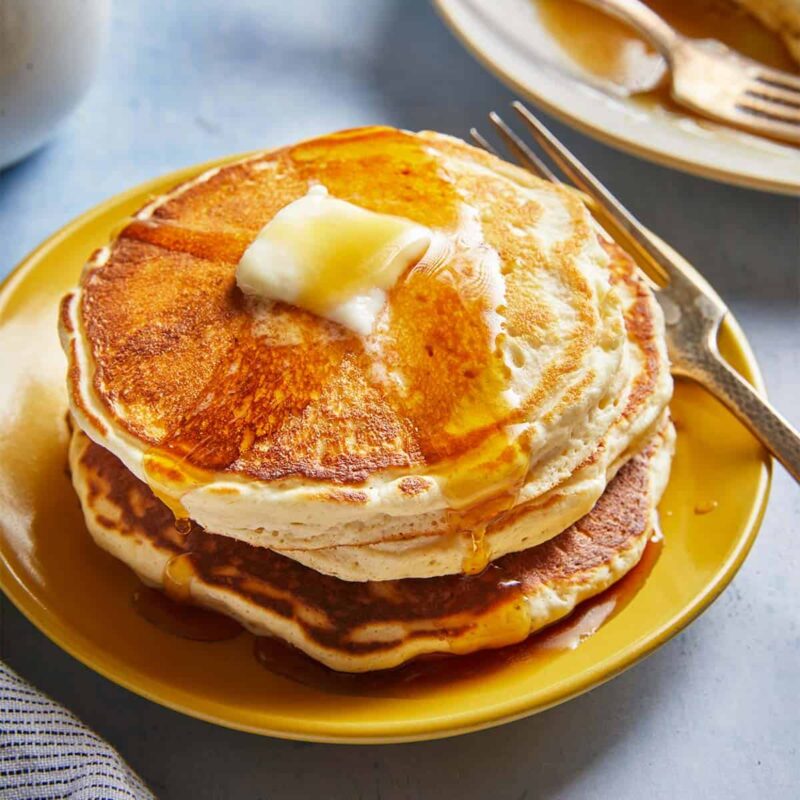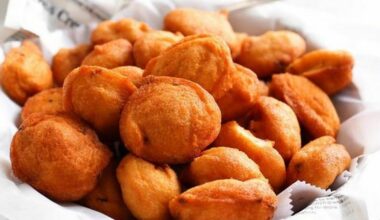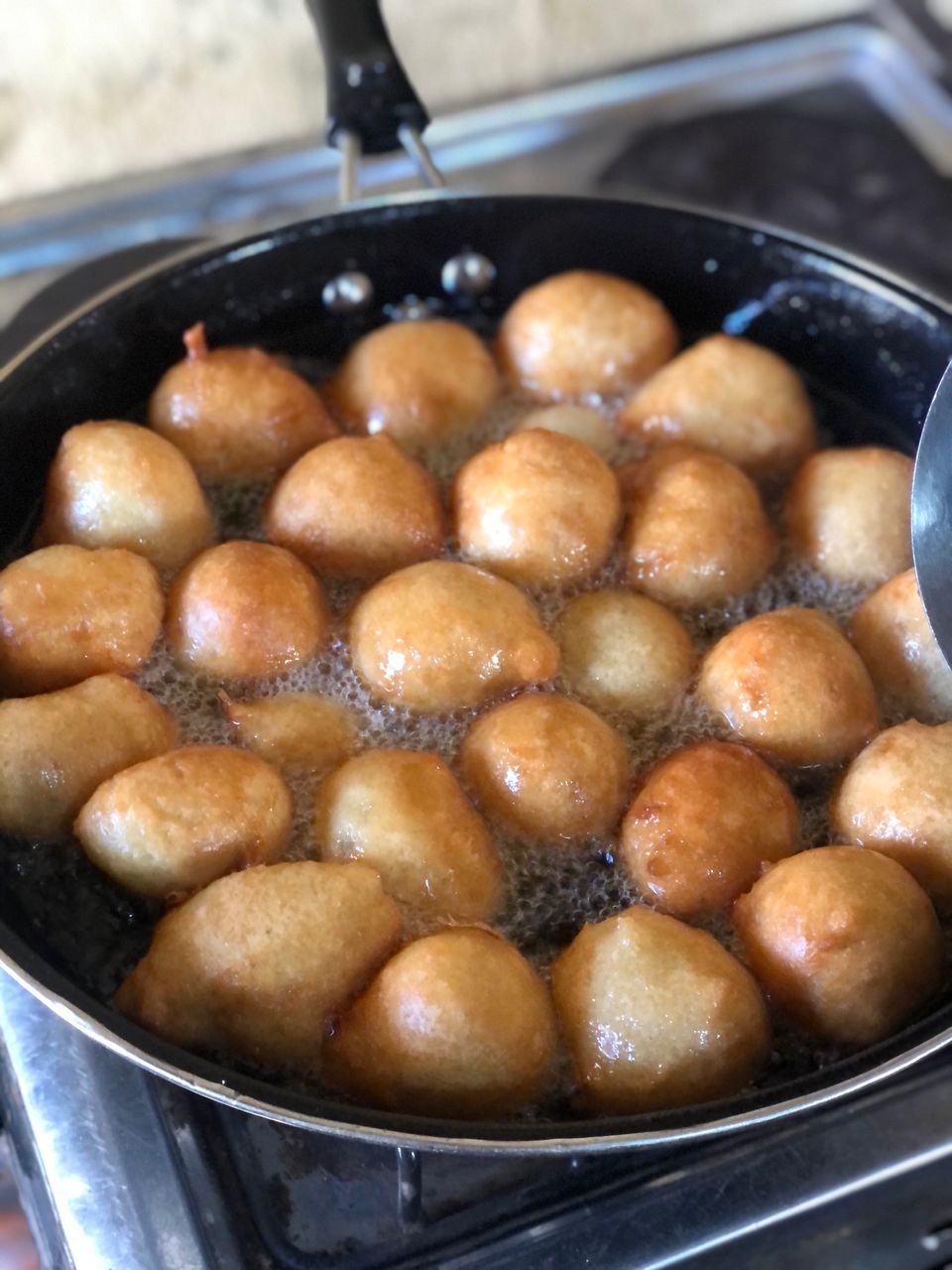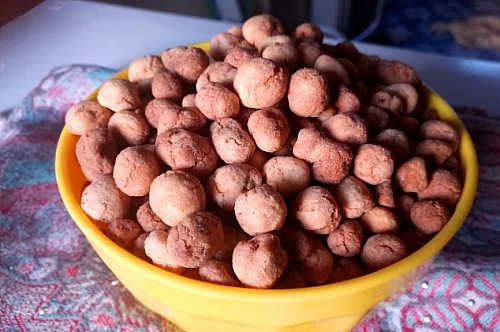Pancakes have long been a beloved breakfast staple, and for good reason. There’s nothing quite like starting your day with a stack of warm, fluffy pancakes. In this comprehensive guide, we will walk you through the step-by-step process of making pancakes from scratch. From the essential ingredients to the cooking techniques, we’ve got you covered.
Essential Ingredients for Pancakes

To make pancakes from scratch, you’ll need a handful of essential ingredients that you likely already have in your pantry. Let’s take a closer look at each ingredient and its role in creating the perfect pancake.
1. Flour
Flour serves as the base ingredient for pancakes, providing structure and texture. All-purpose flour is the most common choice, but you can experiment with alternative flours such as whole wheat or gluten-free options for a healthier twist.
2. Sweeteners
A touch of sweetness enhances the flavor of pancakes. Granulated sugar is a classic choice, but you can also use alternatives like brown sugar, honey, or maple syrup for a more nuanced taste.
3. Leavening Agents
Leavening agents, such as baking powder and baking soda, are crucial for achieving light and fluffy pancakes. These ingredients create bubbles in the batter, causing it to rise and giving the pancakes their airy texture.
4. Liquid
Milk or buttermilk is essential for binding the dry ingredients together and adding moisture to the batter. You can use dairy or non-dairy options depending on your dietary preferences or restrictions.
5. Eggs
Eggs play a vital role in pancakes, providing moisture and structure. They act as a binding agent and contribute to the overall texture of the pancakes. If you follow a vegan diet, you can use substitutes like mashed bananas or applesauce.
6. Fat
Adding fat to pancake batter enhances both the flavor and texture of the pancakes. Melted butter or vegetable oil are commonly used fats, but you can also experiment with alternatives like coconut oil for a unique taste.
Mixing the Pancake Batter
Now that we’ve covered the essential ingredients, let’s dive into the process of mixing the pancake batter. This step is crucial for achieving the perfect consistency and ensuring that all the ingredients are well combined.
1. Dry Ingredients
In a large bowl, whisk together the dry ingredients, including flour, sugar, baking powder, and a pinch of salt. Whisking helps distribute the leavening agents evenly, ensuring that your pancakes rise consistently.
2. Wet Ingredients
In a separate bowl, whisk together the wet ingredients, such as milk, eggs, and melted butter. Whisk until the eggs are fully incorporated and the mixture is smooth. This step helps ensure that all the wet ingredients combine seamlessly with the dry ingredients.
3. Resting the Batter
After combining the wet and dry ingredients, allow the batter to rest for about 10 minutes. This resting period allows the flour to absorb the liquid, resulting in a smoother batter and better flavor development. It also gives the leavening agents time to activate, leading to fluffier pancakes.
Cooking the Perfect Pancakes
Now that you have your pancake batter ready, it’s time to cook them to perfection. The cooking process is just as important as the batter preparation and can significantly impact the texture and flavor of your pancakes.
1. Choosing the Right Pan
The choice of pan can make a difference in how your pancakes turn out. Nonstick pans are convenient and require less oil for cooking, while cast iron pans provide excellent heat distribution and can give your pancakes a beautiful golden crust.
2. Preparing the Pan
Before pouring the batter, make sure to grease the pan with a small amount of oil or butter. This prevents the pancakes from sticking and ensures easy flipping. You can use a brush or simply swirl the oil around the pan.
3. Pouring the Batter
Using a ladle or measuring cup, pour a portion of the batter onto the preheated and greased pan. The size of the pancake will depend on your preference, but aim for a consistent size to ensure even cooking.
4. Adding Mix-Ins
To take your pancakes to the next level, consider adding mix-ins such as chocolate chips, berries, or chopped nuts. Gently sprinkle them onto the pancake right after pouring the batter. This adds extra flavor and texture to your pancakes.
5. Flipping the Pancakes
Wait for bubbles to form on the surface of the pancake before attempting to flip it. This typically takes around 2-3 minutes. Once the bubbles have formed and the edges look set, carefully slide a spatula under the pancake and flip it in one swift motion. Cook the other side for an additional 2-3 minutes or until golden brown.
Serving and Enjoying Pancakes
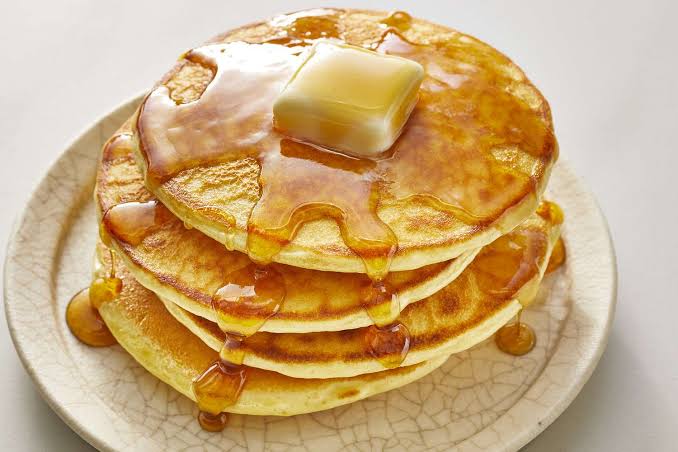
Now that your pancakes are cooked to perfection, it’s time to serve and enjoy them. The toppings and syrups you choose can elevate your pancakes to new heights, turning them into a truly delightful breakfast experience.
Toppings and Syrups
The choice of toppings and syrups is a matter of personal preference. Classic options include butter, maple syrup, and powdered sugar. For a savory twist, consider toppings like bacon, cheese, or avocado. Get creative and experiment with different combinations to find your favorite.
Storing and Reheating Pancakes
If you have leftover pancakes or want to prepare them in advance, you can store them in an airtight container in the refrigerator for up to 5 days. To reheat, simply place them in a toaster or microwave until warmed through. This makes pancakes a convenient option for meal prepping or quick breakfasts on busy mornings.
Variations of Pancakes
While the classic pancake recipe is undoubtedly delicious, there are numerous variations you can explore to add some excitement to your breakfast routine. Here are a few ideas to get you started:
1. Whole Grain Pancakes
For a healthier option, consider using whole grain flour instead of all-purpose flour. Whole grain pancakes offer more fiber and nutrients, making them a nutritious choice to start your day.
2. Gluten-Free Pancakes
If you follow a gluten-free diet, there are plenty of alternatives available. Experiment with gluten-free flours like almond flour or oat flour to create pancakes that are both delicious and suitable for your dietary needs.
3. Vegan Pancakes
Vegan pancakes are a great option for those following a plant-based lifestyle. Replace eggs with substitutes like flaxseed meal or mashed bananas, and use non-dairy milk to achieve the desired consistency. These pancakes are just as tasty and satisfying as their traditional counterparts.
4. Creative Flavors and Mix-Ins
Don’t be afraid to get creative with your pancake flavors. Add fresh fruits like blueberries or bananas to the batter for bursts of natural sweetness. For a decadent treat, try incorporating chocolate chips, nuts, or even sprinkles. The possibilities are endless!
Troubleshooting Pancake Problems
Even with the best intentions, sometimes pancakes don’t turn out as expected. Here are a few common issues you may encounter and how to troubleshoot them:
1. Flat and Dense Pancakes
If your pancakes turn out flat and dense, it may be due to expired or insufficient baking powder. Make sure your baking powder is fresh and use the recommended amount in the recipe. Additionally, avoid overmixing the batter, as this can result in tough pancakes.
2. Burnt Pancakes
Burnt pancakes can be disappointing. To prevent this, adjust the heat on your stove to medium or medium-low. This allows the pancakes to cook evenly without burning the outside.
3. Raw Centers
If your pancakes have raw centers, it’s likely that they need more time to cook. Lower the heat slightly and cook them for a bit longer, ensuring that both sides are golden brown and the pancakes are cooked through.
Frequently Asked Questions (FAQs)
Here are answers to some common questions about making pancakes from scratch:
1. Can pancake batter be made ahead of time?
Yes, pancake batter can be made ahead of time. Store the batter in an airtight container in the refrigerator for up to 24 hours. Give it a good whisk before using, as it may thicken slightly during refrigeration.
2. Can pancakes be frozen?
Absolutely! Cooked pancakes can be frozen for later use. Allow them to cool completely, then stack them with parchment paper or wax paper in between to prevent sticking. Place them in a freezer-safe bag or container and freeze for up to 2 months. To reheat, simply toast them in a toaster or warm them in the microwave.
3. Can I substitute ingredients in pancake recipes?
Yes, you can make substitutions in pancake recipes based on your preferences or dietary needs. For example, you can use alternative flours, sweeteners, or dairy-free options. Keep in mind that substitutions may alter the texture and flavor of the pancakes.
4. Can pancakes be made without eggs?
Yes, pancakes can be made without eggs. There are various egg substitutes you can use, such as mashed bananas, applesauce, or yogurt. These alternatives provide moisture and act as binding agents, producing delicious vegan pancakes.
Conclusion
Congratulations! You’ve learned how to make delicious pancakes from scratch. By following our step-by-step guide, you can create fluffy and flavorful pancakes that will delight your taste buds and impress your family and friends. Whether it’s a lazy weekend brunch or a quick weekday breakfast, homemade pancakes are the perfect way to start your day off right.
